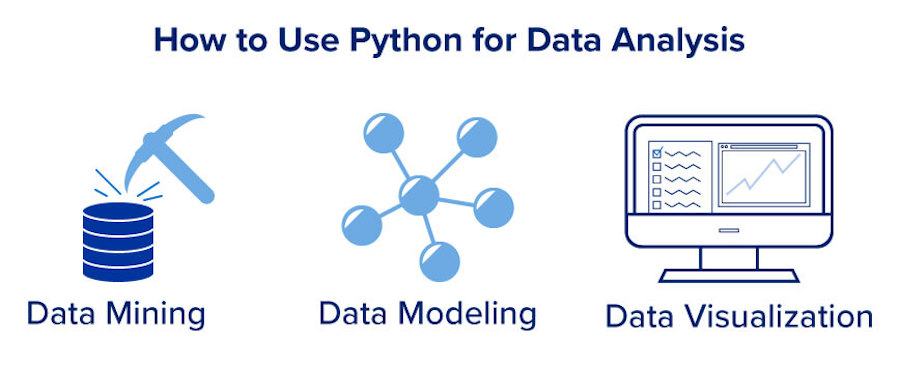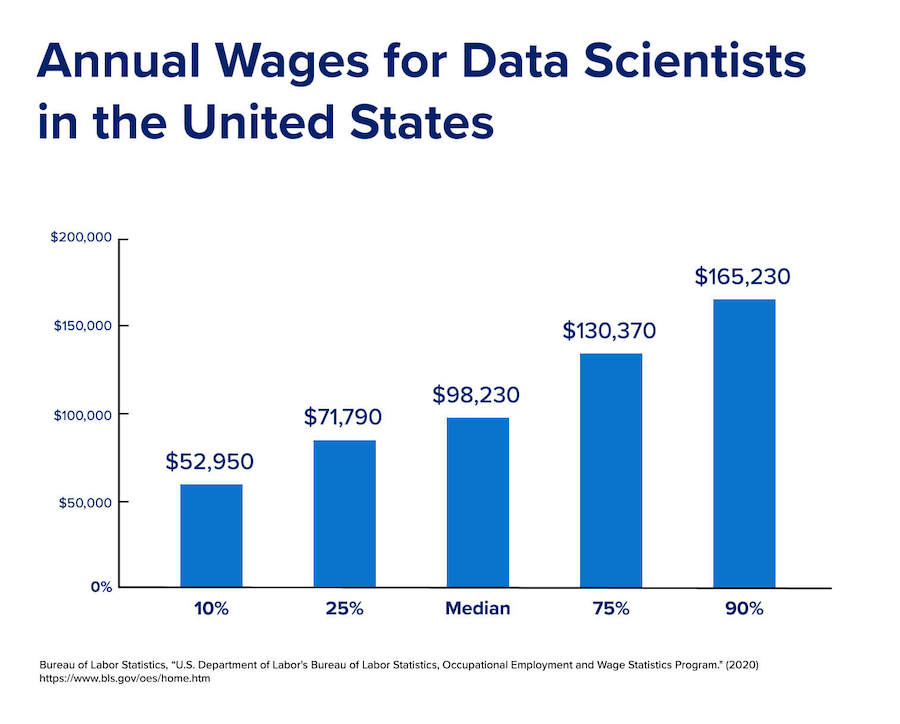How to Use Python for Data Analysis: 3 Use Cases
Working with Python for data analysis requires a broad understanding of the language. If you’re not familiar with Python, check out these Python basics before attempting the use cases below. This will give you a knowledge foundation on which you can layer additional data analysis skills.
Python can be used for many data-related functions, depending on the type of data you’re working with and what you want to learn from that data. Some of Python’s use cases include data mining, data modeling, and data visualization. Let’s discuss each of these functions and how these use cases can be deployed in the real world.
Python Data Analysis Use Case 1: Data Mining
Many businesses generate a trove of data that helps them better understand their customers and processes. However, this data isn’t helpful in and of itself. What businesses must do is develop non-intuitive, predictive, and insightful information from this data, which is called data mining.
Data mining uses data sets to predict likely outcomes given related data set insights and non-intuitive patterns. For example, data mining is particularly valuable for customer journey insights. This information can help businesses understand a person’s likely behavior given certain stimuli, classify customers into different segmentations depending on a variety of attributes, and even help determine factors that can increase the average customer lifetime ROI.
Python Data Analysis Use Case 2: Data Modeling
Data modeling is a process that helps data scientists define and classify data so that it can be aligned to business hierarchies or other structures necessary for analysis. The goal of data modeling is to produce high quality, consistent, structured data for running business applications and informing decision makers. Python is one of the most helpful tools in data modeling because it is highly scalable, flexible, well-supported, and has a robust user community.. It handles large data sets efficiently and is excellent for data categorization and building hierarchies as well.
In addition, Python libraries (sets of useful code) are robust and constantly growing. By using these libraries, data scientists are able to expedite their modeling as they don’t have to start from scratch on every project. Learning how to use Python libraries is a key skill for aspiring data scientists and analysts alike.
-
Python Libraries for Data Analysis: Numpy
Numpy (Numerical Python) is a core library for scientific computing using Python. It’s the perfect tool for identifying scientific data, from basic calculations to advanced functions. This library is a standard for science and engineering, making it an excellent choice for anyone wanting to enter these fields in a data analysis or data science capacity.
Analyzing data with Numpy is fast and efficient, allowing users to analyze large amounts of data very quickly. The code is clear and easy to write, making the setup simple. It’s also a widely used library with many users and contributors; providing resources to new users and anyone encountering a specific problem. Learning Numpy is a great way to get started as your knowledge expands into your specific areas of interest.
-
Python Libraries for Data Analysis: Pandas
Pandas is another Python library used for working with data sets. More specifically, it’s a fast, flexible, and high-level tool that is used to manipulate and analyze data, making real-world data analysis much easier.
Pandas can handle tabular data, taking in information from multiple sources like Excel files, HTML tables, and text files. This enables you to quickly apply the same framework across all of your data to clean and analyze it.
Numpy and Pandas are two important Python libraries to consider, but there is a robust ecosystem of libraries at your disposal. Depending on the type of data you’re using, there are many options that could be the right fit to speed your analysis. If you’re interested in learning more about Python libraries, here is a helpful guide to the top 15 Python libraries for data science.
Python Data Analysis Use Case 3: Data Visualization
Data visualization is the discipline of understanding data by displaying it visually, allowing patterns, trends, or correlations to be understood. Python provides many graphing libraries that enable you to display data in many ways depending on your goals and needs.
Data visualization can help showcase data set trends and features that might not otherwise be obvious. For example, data visualization can help illustrate change over time more effectively than simply looking at a data sheet.
-
Python Libraries for Data Analysis: Matplotlib
Matplotlib is a massive and powerful data visualization library available to Python users. It can display data sets using histograms, paths, three-dimensional plots, bar charts, pie charts, and more — data scientists can then choose the best display type to illustrate their specific data set. Matplotlib has a series of in-depth tutorials that anyone can access if they’re interested in learning more about how to effectively use the library.

 Live Chat
Live Chat

